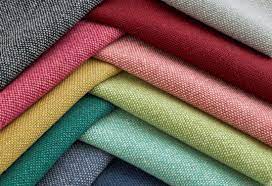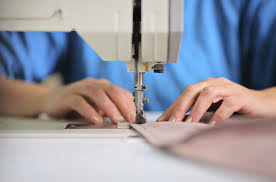TEXTILE INDUSTRY
.jpg)
The Textile Industry is primarily concerned with the design, production and distribution of yarn, cloth and clothing. The raw material may be natural or synthetic using products of the chemical industry.
INTRODUCTION - INDIAN TEXTILE INDUSTRY
.jpg)
The Indian Textile Industry is one of the largest in the world with a large unmatched raw material base and manufacturing strength across the value chain. The industry includes extreme variety of both hand-spun and hand woven textile sectors and the capital-intensive sophisticated mills sector. The decentralized power looms / hosiery and knitting sector forms the largest component in the textiles sector. The formulation of policy, planning, development export promotion and regulation of the textile industry in India is administered under Ministry of Textiles, Government of India.
.jpg)
The Indian Textile Industry is considered among one of the leading textile industries in the world. It is divided into three segments, namely, cotton, synthetic and other textiles such as jute, wool and silk. Apart from providing the basic necessities in the life of Indian people, it plays a significant role in the country's economic growth.
Either directly or indirectly, it has been estimated that one of every six households in the country depends on the Indian Textile Industry for its livelihood. The strong roots of production of cotton yarns and ample skilled and unskilled workers and good export potential are the major characteristics of the Indian Textile Industry. This is a traditional, rich and well-established industry, enjoying considerable demand in the domestic as well as global markets.
.jpg)
The Textile Industry in India traditionally, after agriculture, is the only industry that has generated huge employment for both skilled and unskilled labor. The Textile Industry continues to be the second largest employment generating sector in India. It offers direct employment to over 35 million in the country. According to the Ministry of Textiles, the share of textiles in total exports during April-July 2010 was 11.04%. During 2009-2010, the Indian Textile Industry was pegged at US$ 55 billion, 64% of which services domestic demand. In 2010, there were 2500 textile weaving factories and 4135 textile finishing factories in all of India.

According to AT Kearney's 'Retail Apparel Index', India was ranked as the fourth most promising market for apparel retailers in 2009.
India is first in global jute production and shares 63% of the global textile and garment market. India is second in global textile manufacturing and also second in silk and cotton production. 100% FDI is allowed via automatic route in textile sector. Rieter, Trutzschler, Saurer, Soktas, Zambiati, Bilsar, Monti, CMT, E-land, Nisshinbo, Marks & Spencer, Zara, Promod, Bennetton, and Levi's are some of the foreign textile companies invested or working in India.

The future of the Indian Textile Industry looks promising, buoyed by strong domestic consumption as well as export demand. With consumerism and disposable income on the rise, the retail sector has experienced a rapid growth in the past decade with the entry of several international players. High economic growth has resulted in higher disposable income. This has led to rise in demand for products creating a huge domestic market.
.jpg)
This's just a beginning .......
Looking forward to your comments.......
" Coming together is a beginning.......Keeping together is progress.......Working together is Success!! "
Team - Neethu.N.S. , Kashinath.U.S. , Isaac Lucious James & Sidharth.P.Nair
Thank you!